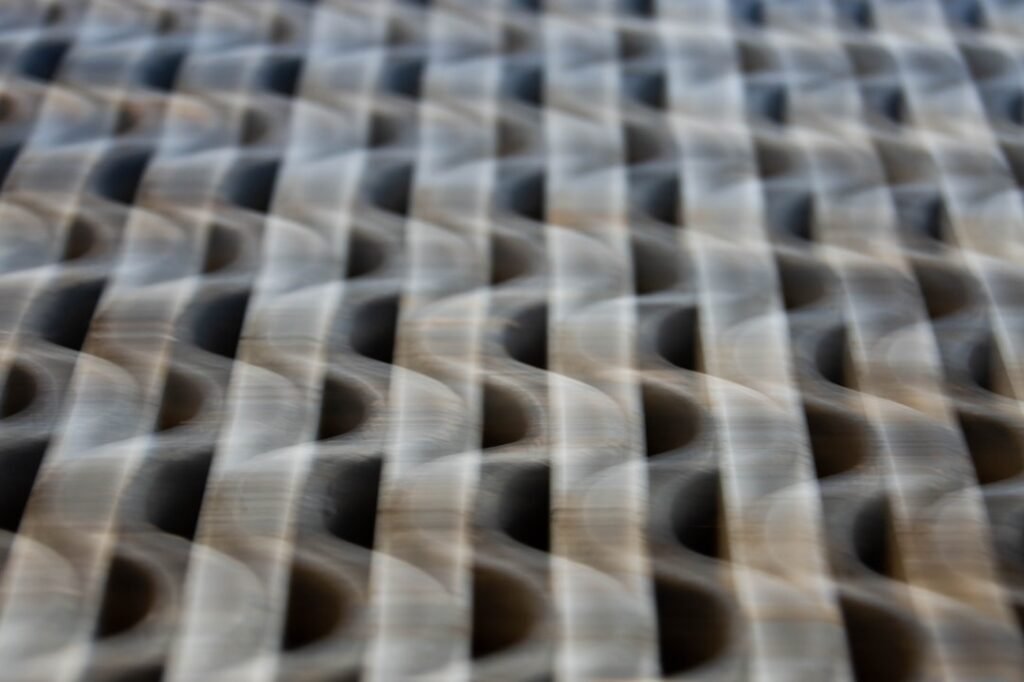The quest for invisibility has captivated human imagination for centuries. From ancient myths to modern science fiction, the ability to make objects vanish from sight has remained one of our most fascinating dreams. Yet in research labs around the world, scientists are working tirelessly to transform this fantasy into reality through the manipulation of light itself.
What was once purely the realm of magic is now becoming an achievable scientific goal. Researchers are developing sophisticated methods to bend, redirect, and control electromagnetic waves using revolutionary materials and techniques. This isn’t about creating magical potions like H.G. Wells envisioned, but rather about understanding the fundamental physics of how light interacts with matter. The results are bringing us closer to true invisibility than ever before.
Understanding the Fundamentals of Light-Bending Technology

Optical cloaking allows objects to be hidden in plain sight by guiding light around anything placed inside the cloak. The science behind invisibility relies on a principle as elegant as it is complex: rather than making objects transparent, true cloaking technology redirects light around them entirely.
Think of light waves like water flowing around a rock in a stream. Traditional materials either absorb light or let it pass through unchanged. However, revolutionary engineered materials can now bend light in unnatural ways, guiding electromagnetic waves smoothly around objects without creating shadows or reflections. Perfect optical cloaking requires the total scattering of electromagnetic waves around an object at all angles and all polarizations and over a wide frequency range, irrespective of the medium.
These unique materials became notable because electromagnetic radiation can be bent, reflected, or skewed in new ways. Scientists accomplish this through precise control of how light’s electric and magnetic components interact with specially designed structures. The mathematics involved is incredibly complex, but the underlying concept is straightforward: create a material that acts like a sophisticated lens system, seamlessly redirecting light rays around a hidden region.
Metamaterials: The Building Blocks of Invisibility

This will vastly improve the ability to rapidly design metamaterials — exciting artificial materials used to amplify, block or deflect waves. Metamaterials represent perhaps the most promising pathway toward achieving practical invisibility cloaking devices.
These artificially engineered structures can manipulate electromagnetic waves in ways that natural materials simply cannot. Metamaterials interact with light in ways that appear to violate the laws of physics. They can bend light around an object as if it weren’t there, or narrow the resolution of light microscopes down to a few nanometers. The key lies in their precisely crafted internal structure, which operates at scales much smaller than the wavelength of light itself.
Scientists have managed to create artificial nanostructures that can do the job, called metamaterials. Each tiny element within a metamaterial acts like a miniature antenna, responding to incoming electromagnetic waves and reshaping them according to predetermined patterns. This control is supplied by optical metamaterials, which are (usually) periodic nanostructured materials, where the periodic cells are in essence tiny electromagnetic circuits that interact with both the electric and magnetic fields of light.
Breakthrough Software Accelerates Metamaterial Design

New research brings this science fiction concept a step closer, with a breakthrough software package that simulates how waves interact with complex materials. A new software package developed by researchers at Macquarie University can accurately model the way waves — sound, water or light — are scattered when they meet complex configurations of particles.
The development of sophisticated simulation tools has dramatically accelerated progress in metamaterial research. Now the Duke University researcher who built the first invisibility cloak in 2006 has created software that speeds up the design of metamaterials. He and his colleagues have used the program to build a complex light cloak that’s invisible to a broad band of microwave light–and they did it in only about 10 days.
Previously, designing effective metamaterials required painstaking trial and error processes that could take months or years. The Southeast University researchers developed new algorithms to greatly speed up the process, says Smith. These algorithms make it possible to quickly predict how a structure with a particular shape will interact with light. This computational breakthrough has opened new possibilities for creating larger, more sophisticated cloaking devices.
Broadband Cloaking: Beyond Single Wavelengths

The cloak that the researchers built works with wavelengths of light ranging from about 1 to 18 gigahertz–a swath as broad as the visible spectrum. One of the most significant challenges in developing practical invisibility cloaks has been creating devices that work across multiple wavelengths simultaneously.
To make a Harry Potter-style invisibility cloak requires the use of materials that have what’s known as a negative refractive index over all optical wavelengths, from red to violet. However, the artificially-structured optical materials from which cloaks are made thus far have been restricted to a very narrow range of optical wavelengths, limiting their ability to cloak over a range of colors.
Recent advances have begun to solve this limitation. That obstacle to progress looks to be at an end, as a group of optical engineers at Stanford has succeeded in designing a broadband metamaterial that exhibits a negative refractive index over nearly the entire rainbow. Researchers have created a new type of invisibility cloak that is simpler than previous designs and works for all colors of the visible spectrum, making it possible to cloak larger objects than before and possibly leading to practical applications in “transformation optics.”
Smart Metamaterials: Self-Adapting Cloaking Systems

Here we demonstrate smart metamaterial cloaking, wherein the metamaterial device not only transforms electromagnetic fields to make an object invisible, but also acquires its properties automatically from its own elastic deformation. The next generation of cloaking devices goes beyond static designs to create adaptive systems.
The metamaterial is uniform, or perfectly periodic, in its undeformed state and acquires the necessary gradient-index profile, mimicking a quasi-conformal transformation, naturally from a boundary load. These smart materials can automatically adjust their properties based on the shape and size of objects they need to conceal.
This adaptability represents a major breakthrough in practical cloaking technology. Shin et al.demonstrate an elastic, smart metamaterial cloak that can adapt to a range of deformations and object sizes. Rather than requiring custom-designed cloaks for each specific application, smart metamaterials could provide universal cloaking solutions that adjust themselves automatically to different scenarios.
Photonic Crystals: A New Approach to Light Manipulation

They’re using crystal “atoms” made of dielectric rods called photonic crystals. While metamaterials have dominated cloaking research, photonic crystals offer an alternative approach that may solve some persistent challenges.
The team developed an approach using photonic crystals. Becoming invisible is no magic trick. Making objects invisible comes down to redirecting electromagnetic waves. Unlike traditional metamaterials that rely on metallic elements, photonic crystals use carefully arranged dielectric materials that have much lower losses.
As such, photonic crystals show a lot of promise for invisibility cloaking. Photonic crystals that Semouchkina and her team employ for the cloak medium are able to provide superluminal phase velocity of propagating waves. That is, the phase velocity can exceed the speed of light in vacuum, though no energy or information travels faster than light. This seemingly impossible property allows the crystals to maintain proper phase relationships as light bends around cloaked objects.
Green Stealth Technology: Environmental Innovation

At the heart of this innovation is the Anlakṣhya Metamaterial Surface Cloaking System (MSCS), a breakthrough stealth coating developed by researchers at the Indian Institute of Technology Kanpur (IIT-Kanpur). Anlakṣhya – meaning “invisible” in Sanskrit – utilizes advanced wave-absorbing metamaterials to cloak military assets, including fighter jets like the AMCA, from radar detection, particularly Synthetic Aperture Radar (SAR) systems.
This eco-friendly formulation eliminates volatile organic compounds (VOCs) and heavy metals commonly found in traditional stealth paints, which pose health risks to workers and environmental hazards during disposal. The development of environmentally friendly cloaking materials represents a significant step toward practical applications.
The technology absorbs a broad spectrum of radar waves, converting them into negligible heat or scattering them away, achieving near-perfect invisibility. Over 90% of its materials are sourced domestically, reducing dependency on imports and minimizing environmental impact during production. This advancement shows how invisibility technology is moving from laboratory curiosities to real-world applications.
Current Limitations and Future Possibilities

Despite remarkable progress, several challenges still limit practical invisibility cloaking. At this time, however, metamaterials are limited. Cloaking across a broad spectrum of frequencies has not been achieved, including the visible spectrum. Dissipation, absorption, and dispersion are also current drawbacks, but this field is still in its optimistic infancy.
Size limitations remain a significant constraint. Second, only small objects can be made to appear as the surrounding air. In the case of the 2006 proof of cloaking demonstration, the hidden from view object, a copper cylinder, would have to be less than five inches in diameter, and less than one half inch tall. However, recent advances in manufacturing techniques are beginning to address these scale limitations.
Following this technique, larger pieces of this special material can be created, which were previously limited to micron-scale size. By improving the technique, the team hopes to be able to create larger pieces of the material with engineered optical properties, which would make it practical to produce for real-life device applications.
The physics of invisibility has evolved from science fiction fantasy to scientific reality within just two decades. While we haven’t yet achieved perfect Harry Potter-style invisibility cloaks, the rapid progress in metamaterials, photonic crystals, and smart adaptive systems suggests that practical cloaking devices may be closer than most people realize.
The convergence of advanced computational design tools, environmentally friendly materials, and sophisticated manufacturing techniques is accelerating development in ways that seemed impossible just a few years ago. From military stealth applications to potential consumer technologies, the implications of this research extend far beyond simple invisibility.
What do you think about the potential of invisibility technology becoming mainstream? Tell us in the comments.




